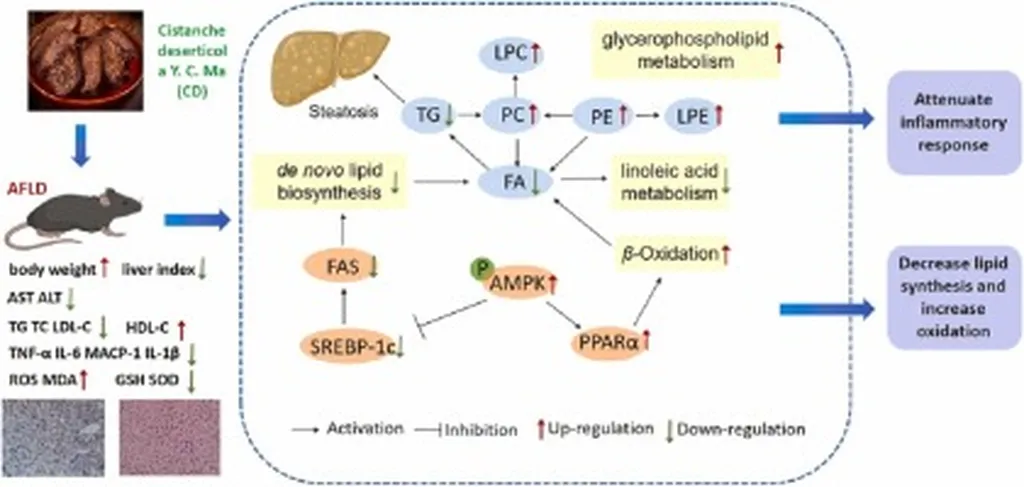In the quest to mitigate the damaging effects of alcohol on the liver, a recent study published in the *Journal of Functional Foods* has shed light on the potential of *Cistanche tubulosa* extract (CE) as a promising functional food ingredient. The research, led by Dilireba Shataer from the College of Smart Agriculture at Xinjiang University, delves into the metabolic pathways through which CE alleviates alcoholic liver injury, offering new insights beyond the previously established Nrf2 mechanism.
The study employed a multi-omics approach, combining untargeted metabolomics and transcriptomics, to uncover the intricate relationship between metabolites and genes. By establishing an acute alcohol injury model, the researchers assessed the degree of liver injury alleviation through various serum biochemical indicators. The results were compelling: pretreatment with CE significantly mitigated the adverse effects of alcohol, as evidenced by improvements in markers such as ALT, AST, TC, TG, MDA, CAT, GSH, SOD, IL-6, IL-1β, and TNF-α.
One of the key findings of the study was the identification of bioactive compounds in CE using UHPLC-MS/MS. This analytical technique provided a comprehensive profile of the extract’s components, paving the way for a deeper understanding of its hepatoprotective mechanisms. “The multi-omics analysis revealed that CE exerts its protective effects by regulating amino acid metabolism pathways, particularly through the upregulation of GOT1 expression,” explained Shataer. This discovery highlights the potential of CE as a functional food ingredient that could be integrated into dietary supplements or health foods aimed at liver protection.
The commercial implications of this research are substantial for the agriculture sector. *Cistanche tubulosa*, a parasitic plant native to desert regions, has long been valued in traditional medicine. However, its potential as a functional food ingredient has only recently begun to be explored. The findings of this study could spur the development of new agricultural practices focused on cultivating *C. tubulosa* for commercial use. This could open up new revenue streams for farmers and create opportunities for agribusinesses to diversify their product offerings.
Moreover, the study’s emphasis on multi-omics analysis sets a precedent for future research in the field. By integrating metabolomics and transcriptomics, researchers can gain a more holistic understanding of the biological mechanisms underlying the health benefits of various plant extracts. This approach could accelerate the discovery of new functional food ingredients and pave the way for personalized nutrition strategies.
As the global demand for natural and effective health solutions continues to grow, the potential of *Cistanche tubulosa* extract in attenuating alcoholic liver injury offers a glimmer of hope. The research led by Dilireba Shataer from the College of Smart Agriculture at Xinjiang University not only advances our scientific understanding but also holds significant promise for the agriculture sector. By harnessing the power of multi-omics analysis, we can unlock the full potential of plant-based extracts and develop innovative solutions for liver health and beyond.

